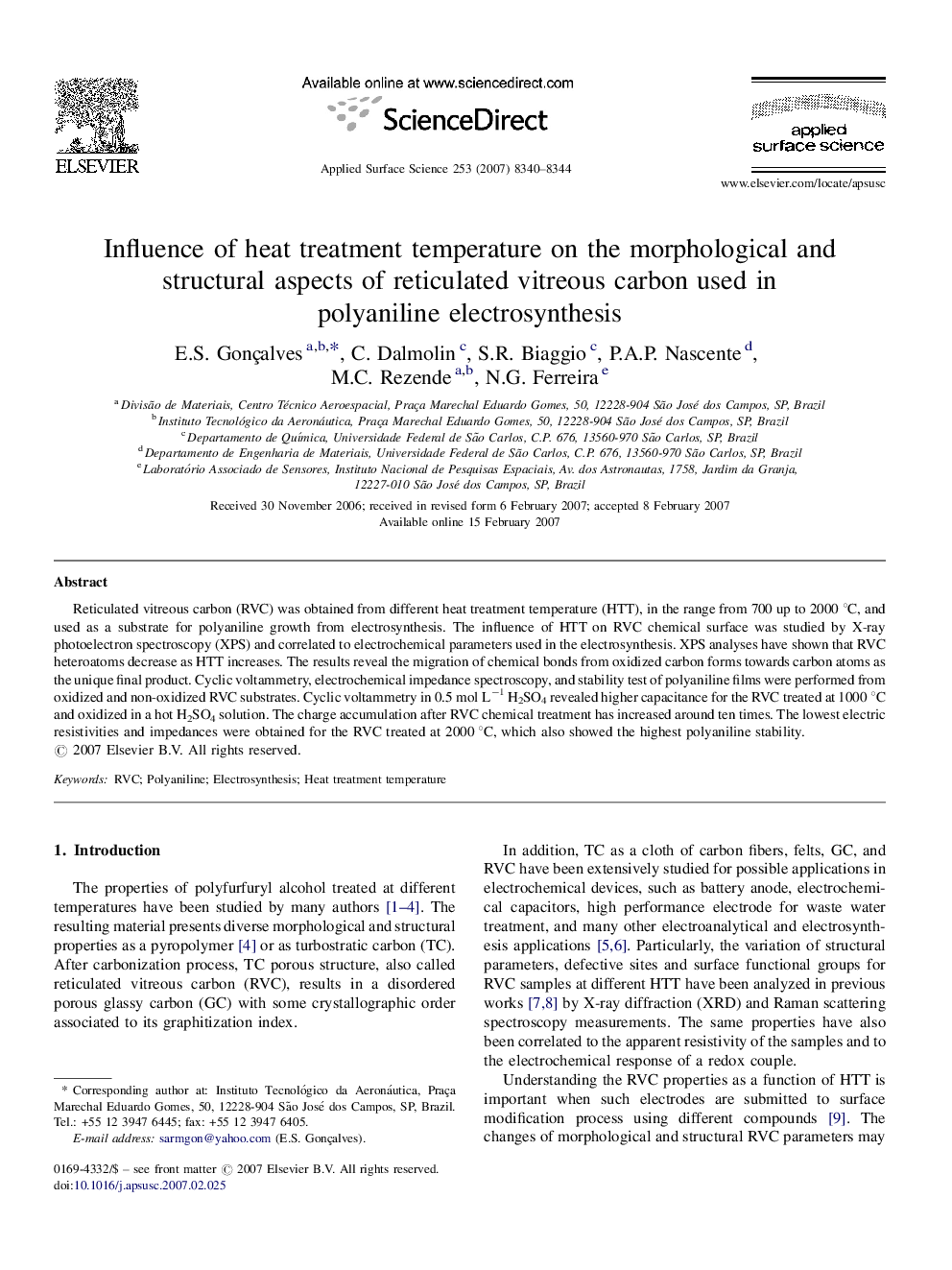| Article ID | Journal | Published Year | Pages | File Type |
|---|---|---|---|---|
| 5366730 | Applied Surface Science | 2007 | 5 Pages |
Reticulated vitreous carbon (RVC) was obtained from different heat treatment temperature (HTT), in the range from 700 up to 2000 °C, and used as a substrate for polyaniline growth from electrosynthesis. The influence of HTT on RVC chemical surface was studied by X-ray photoelectron spectroscopy (XPS) and correlated to electrochemical parameters used in the electrosynthesis. XPS analyses have shown that RVC heteroatoms decrease as HTT increases. The results reveal the migration of chemical bonds from oxidized carbon forms towards carbon atoms as the unique final product. Cyclic voltammetry, electrochemical impedance spectroscopy, and stability test of polyaniline films were performed from oxidized and non-oxidized RVC substrates. Cyclic voltammetry in 0.5 mol Lâ1 H2SO4 revealed higher capacitance for the RVC treated at 1000 °C and oxidized in a hot H2SO4 solution. The charge accumulation after RVC chemical treatment has increased around ten times. The lowest electric resistivities and impedances were obtained for the RVC treated at 2000 °C, which also showed the highest polyaniline stability.
